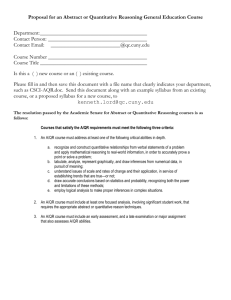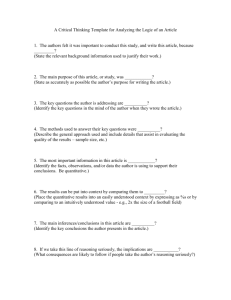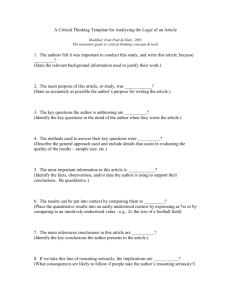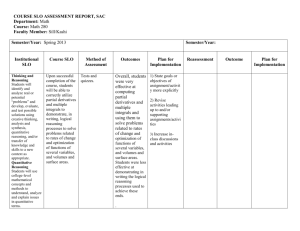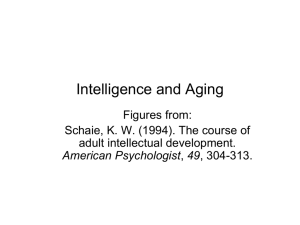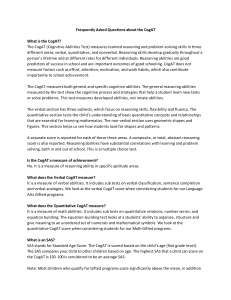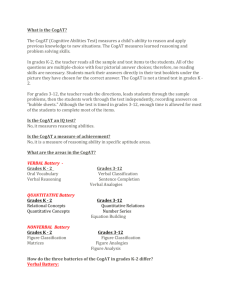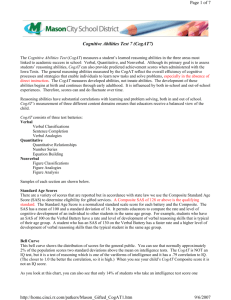MAP vs. CoGat - Barrington 220
advertisement
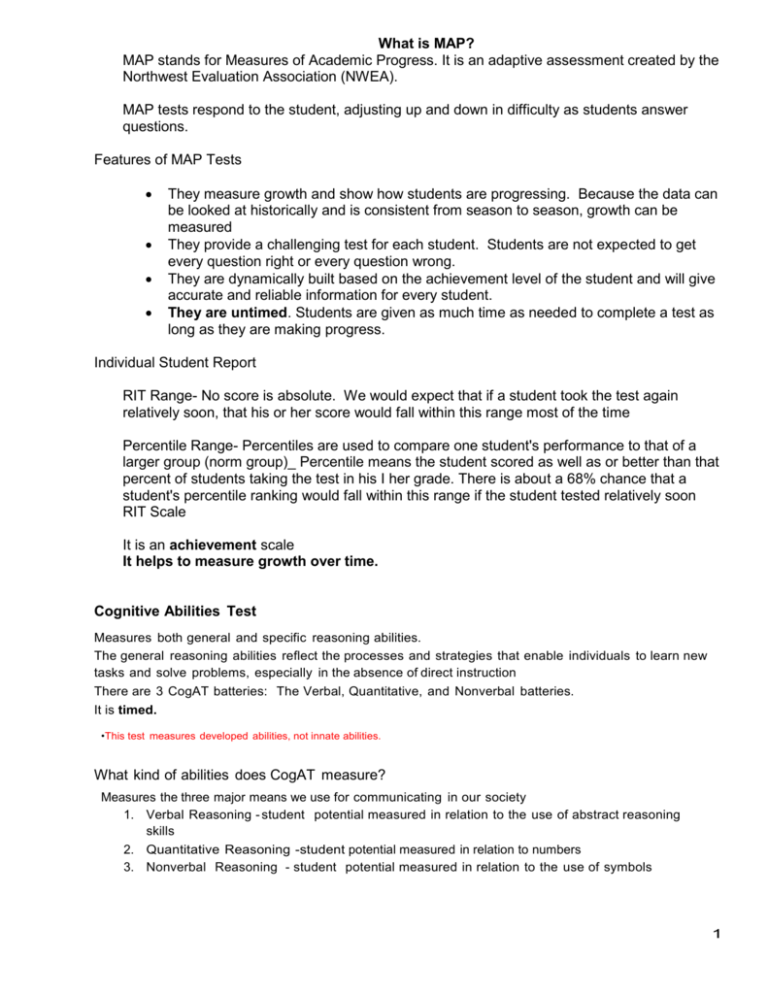
What is MAP? MAP stands for Measures of Academic Progress. It is an adaptive assessment created by the Northwest Evaluation Association (NWEA). MAP tests respond to the student, adjusting up and down in difficulty as students answer questions. Features of MAP Tests They measure growth and show how students are progressing. Because the data can be looked at historically and is consistent from season to season, growth can be measured They provide a challenging test for each student. Students are not expected to get every question right or every question wrong. They are dynamically built based on the achievement level of the student and will give accurate and reliable information for every student. They are untimed. Students are given as much time as needed to complete a test as long as they are making progress. Individual Student Report RIT Range- No score is absolute. We would expect that if a student took the test again relatively soon, that his or her score would fall within this range most of the time Percentile Range- Percentiles are used to compare one student's performance to that of a larger group (norm group)_ Percentile means the student scored as well as or better than that percent of students taking the test in his I her grade. There is about a 68% chance that a student's percentile ranking would fall within this range if the student tested relatively soon RIT Scale It is an achievement scale It helps to measure growth over time. Cognitive Abilities Test Measures both general and specific reasoning abilities. The general reasoning abilities reflect the processes and strategies that enable individuals to learn new tasks and solve problems, especially in the absence of direct instruction There are 3 CogAT batteries: The Verbal, Quantitative, and Nonverbal batteries. It is timed. •This test measures developed abilities, not innate abilities. What kind of abilities does CogAT measure? Measures the three major means we use for communicating in our society 1. Verbal Reasoning - student potential measured in relation to the use of abstract reasoning skills 2. Quantitative Reasoning -student potential measured in relation to numbers 3. Nonverbal Reasoning - student potential measured in relation to the use of symbols 1 Differences between ability and achievement Ability and achievement are different aspects of cognitive development Achievement- knowledge and skills specifically taught in schools Ability- reasoning abilities that are developed indirectly through instruction that challenges students to think in new ways Physical Analogy- general level of fitness is like an ability- doing well in a specific sport relates to learning the knowledge and skills of that game The Quantitative Battery Measures quantitative reasoning skills, flexibility and fluency in working with quantitative symbols and concepts; and the ability to organize, structure, and give meaning to an unordered set of numerals and mathematical symbols These reasoning skills are significantly related to problem solving in mathematics and other disciplines The Verbal Battery Measures flexibility, fluency, and adaptability in reasoning with verbal materials and in solving problems. These reasoning abilities play an important role in reading comprehension, critical thinking, writing, and virtually all verbal learning tasks. The Nonverbal Battery Measures reasoning using geometric shapes and figures. To perform successfully, students must invent strategies for solving novel problems. Students must be flexible in using these strategies and accurate in implementing them. 2




